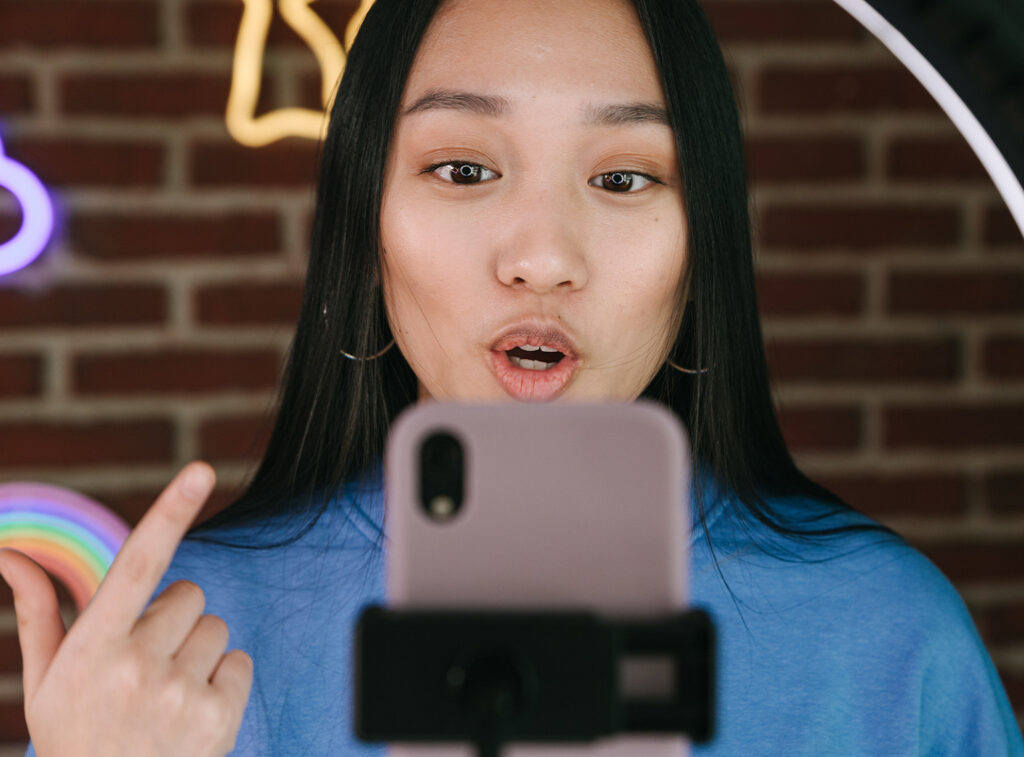 Ivan Samkov via Pexels
Ivan Samkov via Pexels
Social media platforms are ever evolving, constantly displaying new ways to sell and advertise products to consumers. Livestream shopping is one such tool, combining human interaction with fast shopping transactions. Viewers can directly express their opinions and feedback through livestream chat functions, as well as send donations to their favorite streamers, building substantial streamer/audience relationships. A study published in the Journal of Open Innovation Technology Market and Complexity demonstrated that exchanging virtual gifts expands consumer satisfaction, and with it potential purchases, due to the resulting social interaction between streamer and viewer.
After having witnessed massive popularity in the Asian markets, the format has had a slower start on social media apps in the West, despite the help of popular brands, internet influencers, and social media platforms.
YouTube partnered with Shopify back in June, which resulted in creators having the ability to go live on the platform and tag products they want to recommend and sell. A Talk Shoppe survey based in the US found that 89% of viewers agree that they can trust recommendations from YouTube creators.
In September 2021, TikTok unveiled a live shopping feature that has authorized users to be able to purchase products through livestreams and events without having to leave the app. However, the Financial Times revealed that a series of investigations uncovered that the company has “paused, delayed or withdrawn the planned rollout of TikTok shop into any other international markets” due to the failure of the feature to gain traction in the UK.
Instagram’s live shopping feature lets brands and creators select up to 30 products or a collection to feature. These products will then be pinned or displayed during their livestream. In December 2021, beauty brand Too Faced launched their “Better Than Sex” perfume through a dedicated livestream on Instagram. It was extremely successful, with 100% of the available inventory within the live selling out.
“Livestream shopping has fallen short of expectations in terms of traction this year. The USA and Europe are still missing certain critical factors such as quality livestream shopping hosts, interaction and incentives, significant discounts, and many more that make live shopping a unique model,” comments Alessandro Bogliari, co-founder and Chief Executive Officer of The Influencer Marketing Agency. “With that being said, this doesn’t mean that it doesn’t have the potential to grow.”
The company conducted a survey of 1,000 US and 1,000 UK consumers between 18 and 67 years old to gain an overview on the progress of livestream shopping for these markets, contrasting it with the state of opportunity in China. Here are the key takeaways:
Total Market Size
- Chinese livestream sales are expected to reach $423 billion by 2022.
- In 2022, livestream shopping revenue in the US is expected to hit $20 billion.
Preferred Platforms
- The Douyin Livestream feature is trendy among young consumers. In fact, as of February 2022, 88.3% of its users reported to have livestreamed.
- First choice for American respondents is Facebook Live (26%), while UK respondents prefer TikTok Live (30%).
Consumer Mindsets
- Only 36% US and 25% UK responders have ever purchased something during a livestream.
- Livestream shopping is not considered as “more fun” nor “more entertaining” compared to regular online shopping.
- The 3 main reasons why US and UK responders shopped during a livestream session are: 1) quality of product, 2) free delivery, 3) discounts.
Spending Figures
- A portion of US responders (27%) have spent between $20 and $50 on livestream shopping in the last 3 months. A majority of UK responders (31%) have spent between $10 and $20.
Chinese Market
- With an annual growth rate of 14%, in 2021, 700 million Chinese users watch livestreams.
- 460 million have purchased goods via platform Livestream, accounting for 44.9% of Chinese internet users.
- One of the most famous KOLs (Key Opinion Leaders), Austin Li, also known as “Lipstick King,” sold $1.7B worth of goods in a 12-hour livestream for Alibaba’s Singles Day.
Popular Apps in the Chinese Market
- Taobao was the first livestream shopping platform introduced in 2016. In 2021, the app accumulated over 50 billion views and the average viewing time increased by 25.8%.
- Kuaishou introduced livestreaming in 2019 giving smaller users more exposure and lowering the fee compared to other platforms. Over 85% of Kuaishou users are from rural areas and lower-tier cities, and in the second quarter of 2022, the revenue from livestreaming increased by 19.1%.
- Douyin (Chinese TikTok) reports that as of February 2022, 88.3% of its users reported to have livestreamed, with over 9 million livestream sessions per month on the platform.
Leading Livestream Shopping Platforms in the US/UK
- NTWRK
- Buywith
- PopShopLive
- CommentSold
Although livestream shopping carries plenty of potential, it seems to be struggling to stick in the US and UK, whereas in China it has situated itself as a go-to shopping method for consumers. With TikTok halting their plans to spread livestream shopping on their app across Europe, it calls into question whether livestreaming has the longevity and potential to grow in US and UK markets.
Original Article Link is found here: beautymatter.com